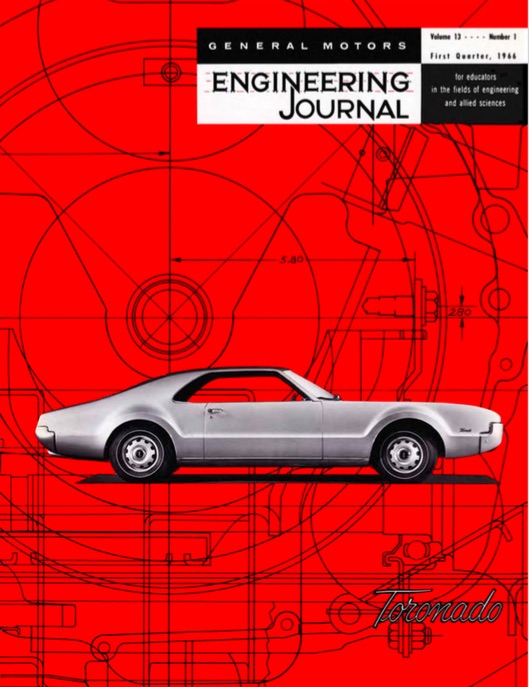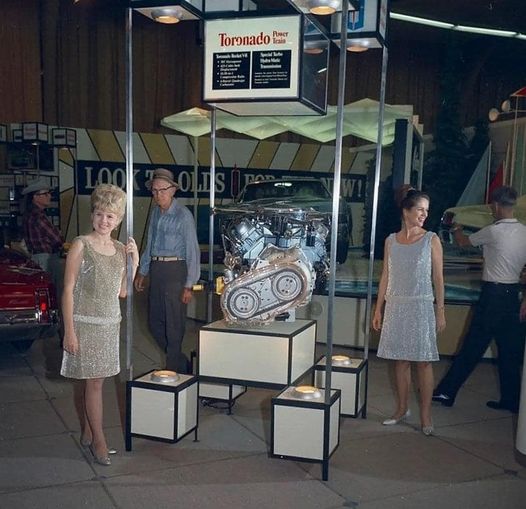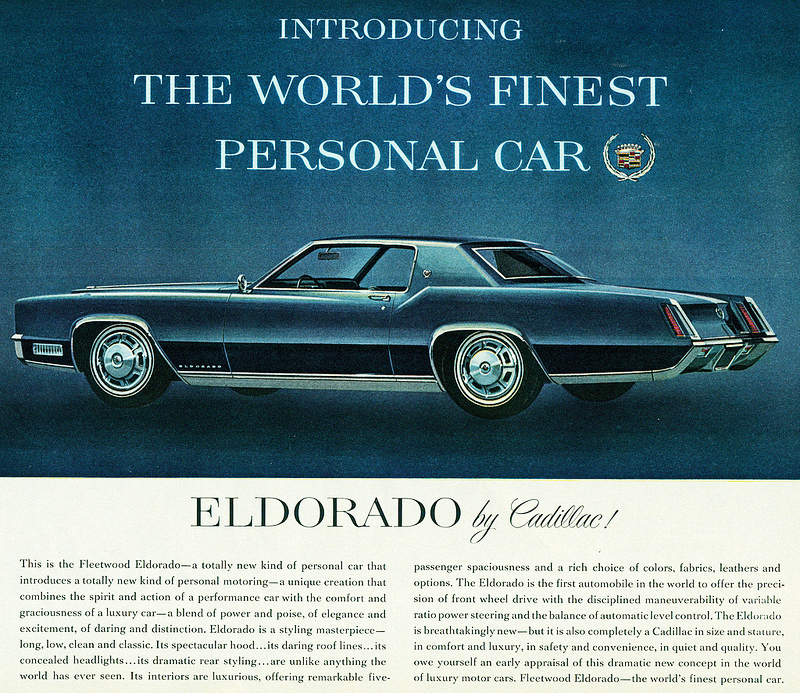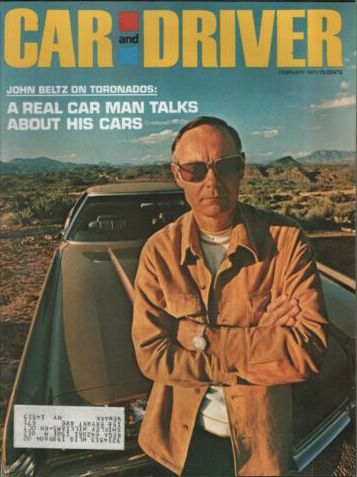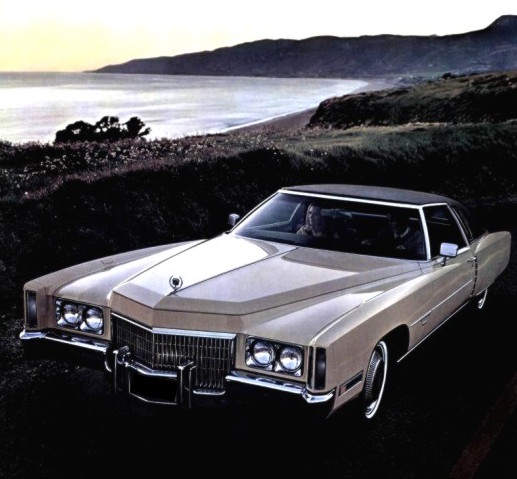THE FWD E-BODY A (Very) Brief History
|
Where it All Began:
|
Chances are, if you're wandering this site you're already fairly knowledgeable about the Eldo and Toro. Entire books have been written on the subject (have they?). If nothing else, there are some great links and ephemera below that all fans might find interesting. As many know, the first modern production FWD automobile was the 1966 Oldsmobile Toronado. It was the perfect example of what General Motors could do when they went all-in. The car was a tour-de-force of tech and design, and on that front, was a massive success.
The enduring innovation for the E-body was the Unitized Power Package, or UPP. Coupled with a torsion bar suspension and a unique half-shaft with damper, you had a big block Olds engine driving the front wheels without torque steer and with the reliability of a RWD vehicle. This UPP would continue in one form or another up through the end of the '85 model year when the '86's moved to a transverse setup with transaxle.
As was usual, Olds was GM's engineering division and were first in delivering tech that would eventually trickle down to the other divisions. With a welcome public reception and proven reliability, the UPP (engine, trans+final drive) was no exception, and appeared in the newly designed Cadillac Eldorado for 1967, using a Cad 429 to power the THM-425 transmission. That doesn't mean Cadillac was simply waiting in the wings, they had been working in parallel with Olds (along with many other GM units), each applying their own expertise to the project to ensure success on their new flagship model. Suffice it to say, the new Eldo was a major hit.
Now, we've all seen the 2nd gen cars, and it's easy to write them off when you look at a '66. How did we go from the crisp lines of the Eldo and the sporting pretensions of the Toro to these wide, long and low land yachts? As it turned out, the '67 Eldo was a much bigger seller than anticipated. In fact, after Toro sales began to drop, Olds had been playing around with a 4-door version in hopes of recouping investment on the project. Thankfully, that didn't happen as the Cad division made the whole endeavor profitable. So when it was time to pen the '71 redesign, Olds General manager John Beltz recruited designer David North to take inspiration from the 1st gen Eldo. At the same time, Cadillac's entire lineup shifted to a heavier, more substantial design language, Eldo included. In some ways, the Toro resembles an Eldo-lite in profile. But other than sharing a THM-425, each division still maintained independent design authority and the reality is few parts interchange. Personally, I feel that's what makes the competing E-bodies so special, and personally owning one of each, can honestly say they have their own distinctive "driving feel".
By the way, sales of the 2nd gen Toro did skyrocket; it was exactly what the public wanted. The UPP would continue with minor changes through 1978 for both Toro and Eldo, each maintaining a division-exclusive engine, and division-exclusive sheetmetal, interiors, electrical and mechanical systems. And of course, the UPP with Olds engine was the prime mover for the GMC Motorhome. And before you write-off the '71-'78 cars as uninteresting luxo-mobiles, consider they both delivered some serious tech in a low-key fashion: 4-wheel disc brakes, high mount brake lights, digital spark control (1st automobile with a microprocessor), electronic fuel injection, ACRS (air bag system), transistorized lamp monitoring system, and other goodies we take for granted today.
Fast forward to 1979, the first year for the gen-3 cars. The downsizing of the B/C cars in MY '77 had been a success, and despite strong sales of the 77/78 E-bodies, they were both long in the tooth and overdue for an update. The redesign shed nearly 1000 pounds and 20” in length, yet provided larger, more useful interior and trunk space than the gen-2 cars. The longitudinal engine layout was kept, though with smaller displacement engines and a physically smaller THM-325 (3-spd) transmission. The Riviera, which was RWD and technically an E-body from inception, joined the FWD Toro and Eldo for '79. If you've wondered why '77/'78 Rivs look like warmed over Lesabre Coupes, it's because they were. Buick needed a stop-gap until the FWD cars were ready. So what about these '79 E-bodies? My personal opinion, I think GM hit a home-run. Styling was both fresh and classic, all 3 sister cars stand on their own merits and have their defenders. Reliability was excellent (diesel aside). Independent rear suspension and front torsion bar suspension made for a smooth, but responsive ride. Both performance and economy were well above the old models. And styling and interiors improved all the way through '85, though drivetrain options became less than stellar. By the end of MY '85, GM had sold over 1-million of them!
|
| Return to Main Page | Corrections? Additions? Contact Webmaster | Cory Heisterkamp 2022 |

